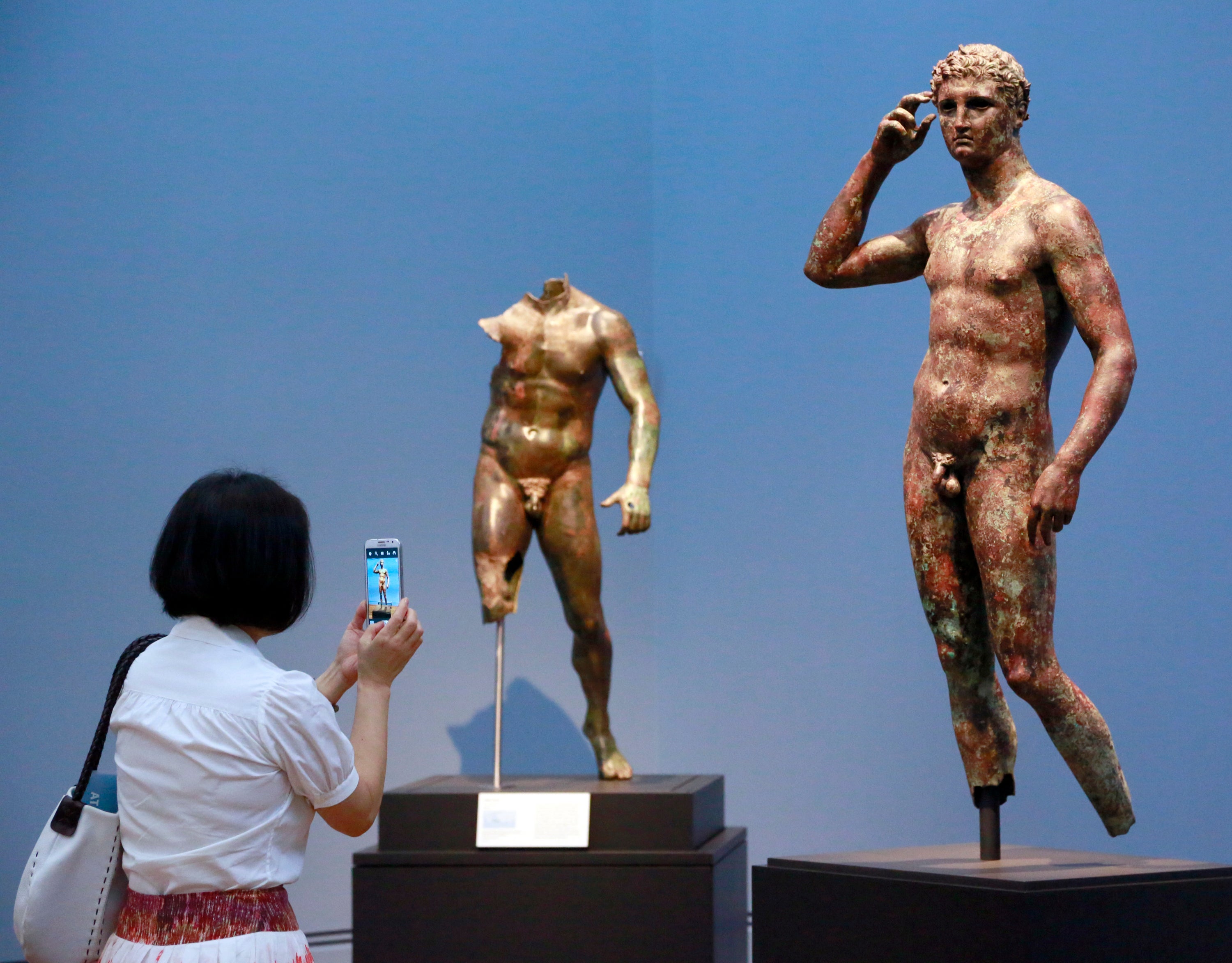European court upholds Italy's right to seize prized Greek bronze from Getty Museum, rejects appeal
A European court has upheld Italy’s right to seize a prized Greek statue from the J

Your support helps us to tell the story
This election is still a dead heat, according to most polls. In a fight with such wafer-thin margins, we need reporters on the ground talking to the people Trump and Harris are courting. Your support allows us to keep sending journalists to the story.
The Independent is trusted by 27 million Americans from across the entire political spectrum every month. Unlike many other quality news outlets, we choose not to lock you out of our reporting and analysis with paywalls. But quality journalism must still be paid for.
Help us keep bring these critical stories to light. Your support makes all the difference.
A European court on Thursday upheld Italy’s right to seize a prized Greek statue from the J. Paul Getty Museum in California, ruling that Italy was right to try to reclaim an important part of its cultural heritage and rejecting the museum's appeal.
The European Court of Human Rights, or ECHR, determined that Italy’s years-long efforts to recover the “Victorious Youth” statue from the Getty were not disproportionate.
The Getty had appealed a 2018 Italian high court ruling that had confirmed a confiscation order, claiming that its rights to the statue had been violated by Italy's campaign to get it back.
“Victorious Youth,” a life-sized bronze dating from 300 B.C. to 100 B.C., is one of the highlights of the Getty collection.
An Italian court in Pesaro had ordered it seized and returned in 2010, at the height of Italy’s campaign to recover antiquities looted from its territory and sold to museums and private collectors around the globe.
The Getty has long defended its right to the statue, saying Italy had no claim to it.
Among other things, the Getty had argued that the statue is of Greek origin, was found in international waters and has never been part of Italy’s cultural heritage. It has cited a 1968 Court of Cassation ruling that found no evidence that the statue belonged to Italy.
The bronze, which was pulled from the sea in 1964 by Italian fishermen, was purchased by the Getty in 1977 for $4 million and has since been on display at the Getty.
Thursday's ruling by the Strasbourg, France-based ECHR was a chamber judgment. Both sides now have three months to ask that the case be heard by the court's Grand Chamber for a final ruling.
There was no immediate comment from the Getty, and its lawyers referred comment to the museum.
The Getty had appealed to the ECHR by arguing, among other things, that Italy's 2010 confiscation order constituted a violation of its right to enjoy its possessions and that it would be deprived of that right if U.S. authorities carried out the seizure.
The ECHR however, ruled in favor of Italy and strongly reaffirmed Italy's right to pursue the protection of its cultural heritage, especially from unlawful exportation.
"The court further held that owing, in particular, to the Getty Trust’s negligence or bad faith in purchasing the statue despite being aware of the claims of the Italian state and their efforts to recover it, the confiscation order had been proportionate to the aim of ensuring the return of an object that was part of Italy’s cultural heritage," said the summary of the ruling.
The statue, nicknamed the “Getty Bronze,” is a signature piece for the museum. Standing about 5 feet (1.52 meters) tall, the statue of the young athlete raising his right hand to an olive wreath crown around his head is one of the few life-sized Greek bronzes to have survived.
Though the artist is unknown, some scholars believe it was made by Lysippos, Alexander the Great’s personal sculptor.
The bronze is believed to have sunk with the ship that was carrying it to Italy after the Romans conquered Greece. After being found in the nets of Italian fishermen trawling in international waters in 1964, it allegedly was buried in an Italian cabbage patch and hidden in a priest’s bathtub before it was taken out of Italy.
The Italian government says it was brought into Italy and then exported illegally, with the illegal exportation the basis of its confiscation order.
Italy has successfully won back thousands of artifacts from museums, collections and private owners around the world that it says were looted or stolen from the country illegally, and recently opened a museum to house them until they can be returned to the regions from where they were looted.
The most important work to date that Italy has successfully brought back is the Euphronios Krater, one of the finest ancient Greek vases in existence. The Metropolitan Museum of Art in New York, which purchased it for $1 million in 1972 from an art dealer later accused of acquiring looted artifacts, returned it to Italy in 2008.
In 2007, the Getty, without admitting any wrongdoing, agreed to return 40 ancient treasures in exchange for the long-term loans of other artifacts. Similar deals have been reached with other museums.
Under the 2007 deal, the two sides agreed to postpone further discussion of “Victorious Youth” until the court case was decided.
Subscribe to Independent Premium to bookmark this article
Want to bookmark your favourite articles and stories to read or reference later? Start your Independent Premium subscription today.